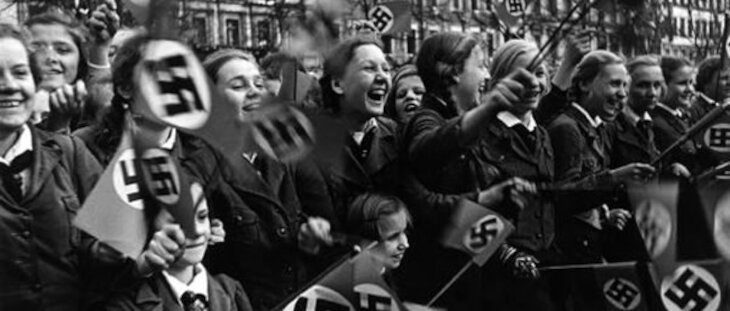Jewish homes, businesses, and schools were vandalized and destroyed. Thousands of Jews were arrested and sent to concentration camps.
The events of Kristallnacht marked a turning point in the persecution of Jews in Austria, as it became clear that the Nazi regime was intent on the systematic destruction of Jewish life.
From that point on, Austrian Jews faced increasing restrictions, violence, and ultimately, deportation to concentration camps where many would perish.
The story of Austrian Jewry during the Anschluss serves as a stark reminder of the dangers of unchecked hatred, bigotry, and intolerance. It is a testament to the resilience and strength of the Jewish people in the face of unspeakable horrors.
Four thousand Jewish shops were vandalized; six thousand Jews were deported to Dachau, and about two thousand to the Buchenwald concentration camp. Those promising to emigrate and leave their property behind were released. Twenty-seven Austrian Jews were murdered.
Refuge and Deportations
The mad, frantic search for sanctuary became even more desperate. Some refuge was found in Great Britain and other European nations, the United States, China- mostly to Shanghai, mandatory Palestine, South America, South Africa, and Australia. By May 1939, almost half of Austrian Jewry had left. Another 28,000 were able to emigrate before the outbreak of war in September.
 Happy Austrians welcoming German Nazis
Happy Austrians welcoming German Nazis
In total, 126,445 Jews managed to leave before the outbreak of the war in September 1939. One week later, the Deutsches Volksblatt newspaper of Vienna urged a “pitiless anti-Jewish boycott” until the last Jew is forced to emigrate from Austria. By the summer of 1939, 27,000 Jewish owned shops and businesses had been closed or confiscated by the government.
By October 1939, the first deportations of Austrian Jews by Eichmann’s orders to Eastern Europe to the detention camp in Nesko, Poland commenced.
By December 1940, Vienna’s remaining Jews, some of whom were forced from outside communities to move into Vienna were numbering about 50,000, mostly unemployed and living in apartments with other families.
In October 1941, the Nazis halted all Jewish emigration and began systematic deportations. On the 15th deportations began to the Lodz Ghetto in Poland. Vienna was the first city to carry out deportations. About 47,500 Jews were deported to ghettos in Eastern Europe from Vienna where most were executed by Einsatzgruppen death squads.
By November 1942, about 7,000 Jews remained in Vienna.
By the end of 1944, only 6,000 Jews were left in Vienna, and 65,000 had died in ghettos and concentration camps.
Without the firing of a shot, Nazism came to Austria with the arrival of the German army. The takeover of Czechoslovakia would soon follow, further enhancing the military strength of Nazi Germany. The Anschluss was a large step towards world war.
Just 113 Austrians are mentioned among Yad Vashem’s Righteous of the Nations as saving Jews, a much lower number than their European neighbors.
For the Jews of Austria who had enjoyed freedom in a society that saw many accomplishments by Jews in many fields, Nazism arrived, abruptly destroying their world.

